Ethnic Groups in Angola
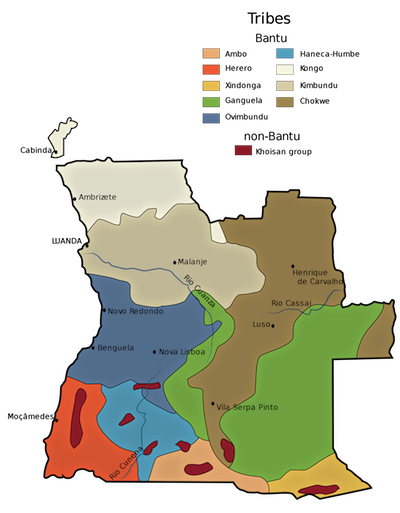
The Bantu are the majority in Angola. The Bantu ethnic group is split into three main groups: Ovimbundu (37%), Kimbundu (25%), and Bakongo (13%). These three make up the majority of the country, as the rest are Mestico (2%), European (1%), or other (22%). The official language of the country is Portuguese, and the Bantu language is also very popular as a way to maintain the Bantu culture. The MPLA and UNITA had a majority of Ovimbundu, while the FNLA was much more of a mix of ethnic groups.
The reason that Angola has a higher population of Mestico than European dates back to the colonization of Angola. When the Portuguese arrived and began to settle in Angola, the Portuguese female population was quite small. This persisted to be an issue for the Portuguese men, and as a result, the population of the Mesticos increased. Even in 1777, the ratio of men to women was 11 to 1, and the Mestico population outnumbered the population of the Portuguese in Angola by about 2,400.
Popular Movement for the Liberation of Angola (MPLA)
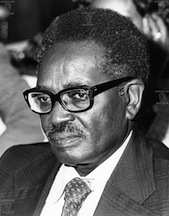
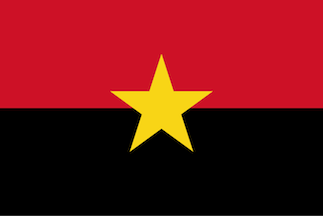
The MPLA was formed through the consolidation of the Angolan Communist Party and the Party of the United Struggle for Africans in Angola in 1956. MPLA’s core base is the Ambundu ethnic group. It’s leaders were a part of an european educated, urban population in Luanda. The party had leftist-leanings and was supported by Soviet interests. The MPLA were instrumental in mounting guerilla warfare tactics against the Portuguese in the War for Independence.
Following independence, the MPLA fought against FNLA and UNITA (both supported South African and Western interests) in an armed conflict. The MPLA were mounted to leadership in 1977, during the first congress of Angola. Subsequently in 1980, South African forces withdrew their support, reaffirming MPLA leadership. Antonio Agostinho Neto (pictured above), the 1st President of Angola and leader of the MPLA, cleansed the MPLA party following his rise to power. The cleanse is estimated to have caused as many as 50,000 deaths.
In 1990, following the conclusion of the Cold War, the MPLA denounced Marxist-Leninist ideology and reverted back to social democracy. The elections of 1992 reaffirmed MPLA power, but were highly contested with many organizations questioning the legitimacy of the ballot. The streets soon broke out in protests and the armed conflict between MPLA against the FNLA and UNITA forces broke out again. The conflict lasted until 2002, after nearly 500,000 civilians were massacred in the war.
National Liberation Front of Angola (FNLA)
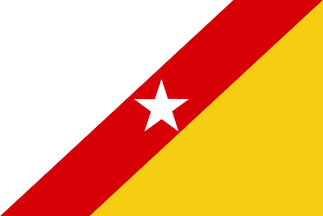
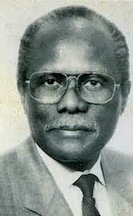
The FNLA was formed in 1954. The organization acted as a right-leaning organization that fought against the MPLA. The FNLA was supported by South Africa, the United States, and France. The FNLA was led by Holden Roberto (pictured above). Roberto began his political career after watching Portuguese officials abuse an elderly man. The FNLA represented the right-wing revolutionary group in Angola. FNLA along with UNITA was aided by the Kennedy and future administrations starting in the early 60s.
National Union for the Total Independence of Angola (UNITA)
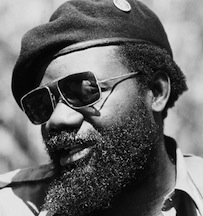
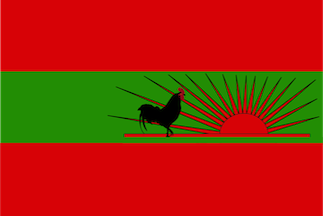
The UNITA was founded in 1966. Similar to the FNLA, UNITA received military and economic support from the United States and South Africa. UNITA was lead by Jonas Savimbi (pictured above). Commonly pictured in his green military jacket and red hat, he waged an aggressive guerrilla war against Portuguese colonial rule. Savimbi aspired to help ead the MPLA before being joining forces with the FNLA and then forming UNITA in 1966.
Savimbi, who studied in China, rejected his Maoist history and began to embrace an anti-communist message. The internal conflict between UNITA and the MPLA was largely controlled by cold war interests. Savimbi was supported by known conservative, pro-capitalism organizations such as the Heritage Foundation--a strike contrast from the MPLA.